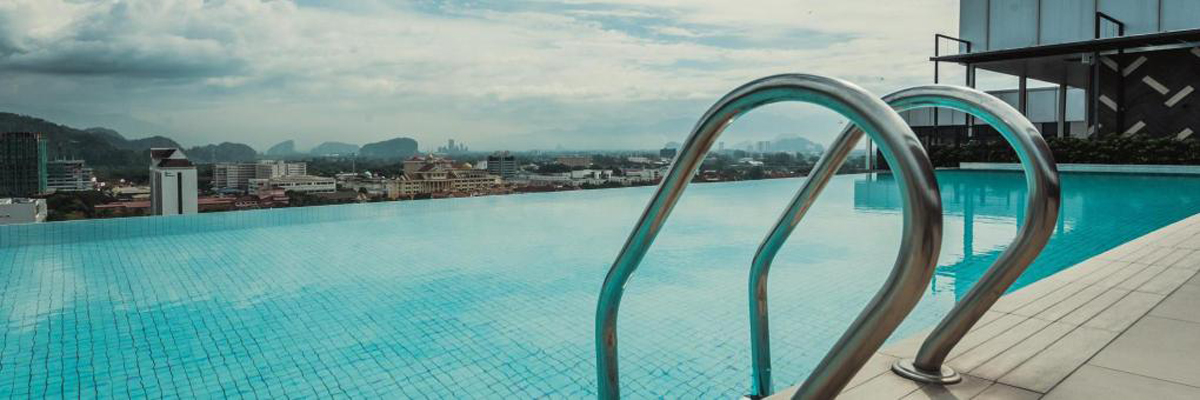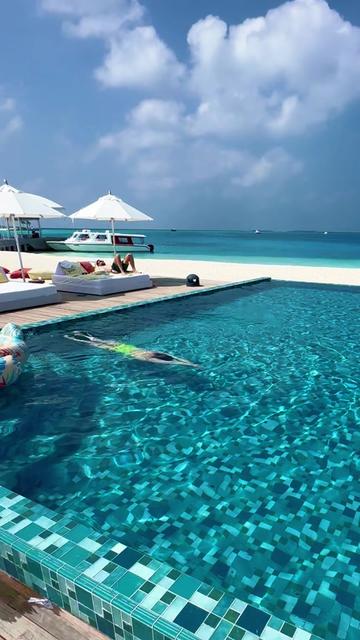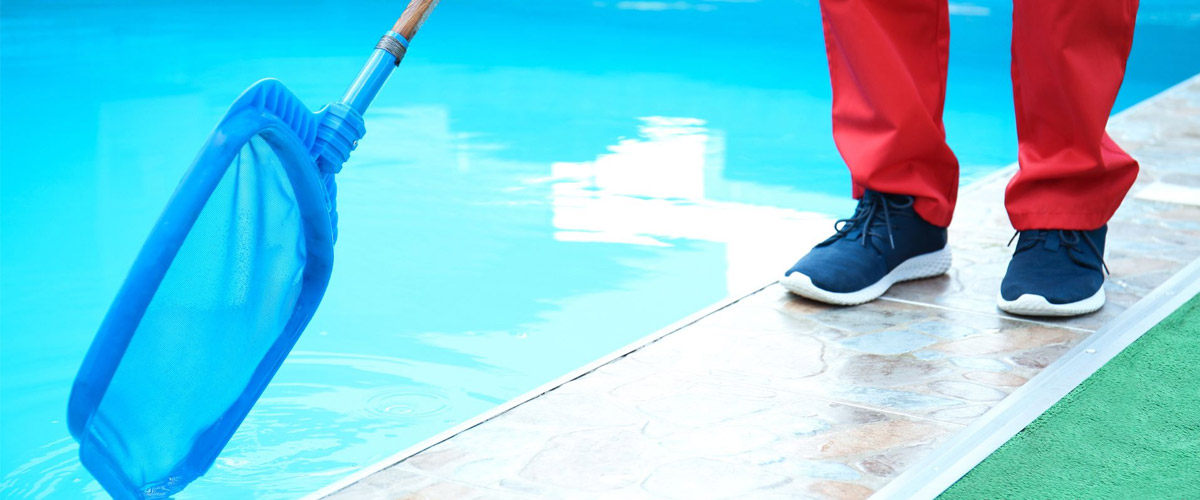

Kimiċi għall-Pixxini - Dak li Trid Taf
Fis-sajf sħun, l-għawm sar l-ewwel għażla ta’ attivitajiet rikreattivi. Dan mhux biss iġib miegħu l-freskezza u l-ferħ, iżda jgħin ukoll lin-nies iżommu ruħhom f’forma tajba. Imbagħad, il-manutenzjoni tal-pixxina hija partikolarment importanti, li hija direttament relatata mas-sikurezza tal-ilma tal-pixxina u l-effiċjenza tal-operazzjoni tat-tagħmir. Dan l-artiklu jippreżenta serje ta’ soluzzjonijiet professjonali u perfetti għal problemi komuni fil-manutenzjoni tal-pixxini, iddisinjati biex jgħinu lill-maniġers tal-pixxini u lill-għawwiema biex ilaħħqu faċilment ma’ dawn il-problemi u jgawdu ambjent tal-għawm aktar nadif, aktar sigur u aktar komdu.
Qabel l-artiklu, ejja nagħtu ħarsa lejn xi kunċetti importanti li se jgħinuna nifhmu x'inhu ġej.
Kontenut ta' Kloru Disponibbli:Tirreferi għall-ammont ta' kloru li l-klorur jista' jossidizza, ġeneralment fil-forma ta' perċentwal, relatat mal-effettività u l-abbiltà ta' diżinfettar tad-diżinfettanti.
Kloru Ħieles (FC) u Kloru Kkombinat (CC):Il-kloru ħieles huwa aċidu ipokloruż ħieles jew ipoklorit, kważi bla riħa, b'effiċjenza għolja ta' diżinfezzjoni; Il-kloru kkombinat huwa r-reazzjoni man-nitroġenu tal-ammonja, bħall-għaraq u l-awrina, biex jipproduċi kloramina, mhux biss għandu riħa irritanti qawwija, iżda għandu wkoll effiċjenza baxxa ta' diżinfezzjoni. Meta ma jkunx hemm biżżejjed kloru u livell għoli ta' nitroġenu tal-ammonja, jiġi ffurmat il-kloru kkombinat.
Aċidu Ċjanuriku (CYA):Is-CYA, li huwa wkoll stabilizzatur tal-pixxina, jista' jżomm l-aċidu ipokloruż stabbli fil-pixxina u jipprevjeni d-dekompożizzjoni rapida tiegħu taħt id-dawl tax-xemx, u b'hekk jiżgura d-durabbiltà tal-effett tad-diżinfezzjoni. Dan jista' jipprevjeni b'mod effettiv it-tkabbir tal-batterji u l-alka, u jżomm l-ilma ċar u sanitarju. Għandu jiġi nnutat li l-livell tas-CYA. Huwa importanti li wieħed jinnota li l-livelli tas-CYA m'għandhomx jaqbżu l-100 ppm.
Xokk tal-Kloru:Billi żżid il-kloru fil-pixxina, il-livell tal-kloru fl-ilma se jiżdied malajr fi żmien qasir biex tinkiseb diżinfezzjoni, sterilizzazzjoni rapida jew tissolva problemi tal-kwalità tal-ilma.
Issa, se niddiskutu formalment kif insolvu l-problemi fil-manutenzjoni tal-pixxina.

Kimiċi tal-Pixxini -- Iċ-Ċavetta biex Tinżamm il-Kwalità tal-Ilma tal-Pixxini
>1.1 Diżinfettant tal-Pixxini -- Joqtol il-Batterji u l-Viruses
Kwalità perfetta tal-ilma teħtieġ sanità tajba biex jiġi żgurat li l-għawwiema ma jinfettawx mard li jinġarr mill-ilma. L-użu xieraq tad-diżinfettanti jista' jiżgura dan. Ġeneralment, id-diżinfezzjoni bil-kloru, id-diżinfezzjoni bil-bromin u d-diżinfezzjoni bil-PHMB huma l-metodi komuni biex jiġu diżinfettati l-pixxini.

1.1.1 Diżinfezzjoni bil-Kloru
Id-diżinfezzjoni bil-kloru fil-pixxini hija metodu komuni u effettiv għat-trattament tal-kwalità tal-ilma. Il-kloru fl-ilma jipproduċi aċidu ipokloruż, li jista' jeqred l-istruttura taċ-ċelluli tal-batterji, viruses u mikro-organiżmi oħra, sabiex tinkiseb id-diżinfezzjoni. Il-kimiċi tal-kloru li jintużaw b'mod komuni fis-suq huma s-Sodium Dichloroisocyanurate, it-Trichloroisocyanuric Acid u l-Calcium Hypochlorite.
- Dikloroisoċjanurat tas-Sodju, ukoll SIDC jew NaDCC, huwa diżinfettant effettiv ħafna, ġeneralment fi granuli bojod. Fih 55%-60% kloru disponibbli, li jista' joqtol b'mod effettiv il-batterji, il-vajrusis u l-alka, u jipprovdi ambjent tal-għawm sikur u b'saħħtu. L-SDIC mhux biss sikur, iżda jista' jinħażen ukoll għal żmien twil, validu għal aktar minn sentejn taħt kundizzjonijiet xierqa. Minħabba li l-SDIC għandu solubilità għolja u rata ta' dissoluzzjoni mgħaġġla, jista' jiġi applikat tajjeb għat-trattament ta' xokk tal-pixxina, sadanittant, għandu ftit impatt fuq il-livell tal-pH tal-pixxini. U l-SDIC huwa kloru stabbilizzat, għalhekk m'hemmx bżonn li jiżdied CYA. Barra minn hekk, aġent effervexxenti jista' jiżdied mal-SDIC biex isiru pilloli effervexxenti, li għandhom rata ta' dissoluzzjoni ħafna ogħla mill-pilloli SDIC puri, u jistgħu jintużaw għad-diżinfezzjoni tad-dar.
Ikklikkja fuq il-link biex tara informazzjoni dettaljata dwar il-prodott
Ikklikkja fuq il-link biex tara informazzjoni dettaljata dwar il-prodott
- Aċidu Trikloroisoċjanuriku (TCCA)huwa wkoll diżinfettant effettiv ħafna, li fih sa 90% tal-kloru disponibbli. Bħall-SDIC, it-TCCA huwa kloru stabbilizzat li ma jeħtieġx CYA meta jintuża fil-pixxini, iżda jbaxxi l-livell tal-pH tal-ilma tal-pixxina. Minħabba li t-TCCA għandu solubilità baxxa u rata ta' dissoluzzjoni bil-mod, ġeneralment ikun fil-forma ta' pilloli u jintuża f'alimentaturi jew dispensers. Iżda minħabba din il-karatteristika, it-TCCA jista' kontinwament u b'mod kostanti jirrilaxxa l-aċidu ipokloruż fl-ilma, sabiex iżomm il-pixxina nadifa u jkollu effett ta' diżinfezzjoni għal aktar żmien. Barra minn hekk, it-TCCA jista' jsir f'pilloli multifunzjonali bi proprjetajiet limitati ta' ċċarar u qtil tal-alka.
Ipoklorit tal-Kalċju, magħruf ukoll bħala CHC, kompost inorganiku fil-forma ta' partiċelli bojod sa bojod mitfija, huwa wieħed mid-diżinfettanti li jintużaw komunement fil-manutenzjoni tal-pixxini. Il-kontenut ta' kloru disponibbli tiegħu huwa ta' 65% jew 70%. B'differenza mill-SDIC u t-TCCA, is-CHC huwa kloru mhux stabbilizzat u ma jżidx il-livell ta' CYA fil-pixxina. Għalhekk, jekk ikun hemm kwistjoni serja tal-kwalità tal-ilma li teħtieġ li tiġi indirizzata u livell għoli ta' CYA fil-pixxina, is-CHC huwa għażla tajba għax-xokk tal-pixxina. Is-CHC huwa aktar problematiku milli tuża diżinfettanti oħra tal-kloru. Minħabba li s-CHC fih ammont kbir ta' materja li ma tinħallx, jeħtieġ li jiġi maħlul u ċċarat qabel ma jitferra' fil-pixxina.
Ikklikkja fuq il-link biex tara informazzjoni dettaljata dwar il-prodott

1.1.2 Diżinfezzjoni tal-Bromin
Id-diżinfezzjoni tal-bromin kisbet ukoll popolarità fil-manutenzjoni tal-pixxini minħabba l-effett ħafif u fit-tul tad-diżinfezzjoni tiegħu. Il-bromin jeżisti fl-ilma fil-forma ta' HBrO u jonju tal-bromin (Br-), li minnhom HBrO għandu ossidazzjoni qawwija u jista' joqtol b'mod effettiv il-batterji, il-vajrusis u mikro-organiżmi oħra. Il-bromochlorodimethylhydantoin hija kimika użata komunement fid-diżinfezzjoni tal-bromin.
Bromoklorodimetilidantoina (BCDMH), tip ta' diżinfettant tal-bromin bi prezz għoli, ġeneralment f'pilloli bojod, għandu 28% kloru disponibbli u 60% bromin disponibbli. Minħabba s-solubilità baxxa tiegħu u r-rata bil-mod ta' dissoluzzjoni, BCDMH jintuża komunement fi spas u hot tubs. Madankollu, il-bromin BCDMH għandu riħa aktar baxxa mill-kloru, għalhekk inaqqas l-irritazzjoni għall-għajnejn u l-ġilda tal-għawwiema. Fl-istess ħin, BCDMH għandu stabbiltà tajba fl-ilma u mhux faċilment affettwat mill-pH, in-nitroġenu tal-ammonja u l-livelli ta' CYA, li jiżgura b'mod effettiv l-effiċjenza tad-diżinfezzjoni tiegħu. Minħabba li l-bromin mhux se jiġi stabbilizzat mis-CYA, oqgħod attent li ma tużahx f'pixxini ta' barra.
Ikklikkja fuq il-link biex tara informazzjoni dettaljata dwar il-prodott

1.1.3 PHMB / PHMG
Il-PHMB, likwidu trasparenti bla kulur jew il-partiċella bajda, il-forma solida tiegħu tinħall ħafna fl-ilma. L-użu tal-PHMB, minn naħa waħda, ma jipproduċix riħa ta' bromin, u b'hekk jevita irritazzjoni tal-ġilda, min-naħa l-oħra, m'hemmx bżonn li tiġi kkunsidrata l-problema tal-livelli ta' CYA. Madankollu, l-ispiża tal-PHMB hija għolja, u mhijiex kompatibbli mas-sistemi tal-kloru u l-bromin, u l-bdil huwa kkumplikat, għalhekk jekk il-proċedura tal-użu tal-PHMB ma tiġix segwita b'mod strett, ikun hemm ħafna problemi. Il-PHMG għandu l-istess effikaċja bħall-PHMB.
>1.2 Bilanċ tal-pH
Il-livell korrett tal-pH mhux biss jimmassimizza l-effettività tad-diżinfettant, iżda jipprevjeni wkoll il-korrużjoni u d-depożizzjoni tal-ġebla. Tipikament, il-pH tal-ilma huwa madwar 5-9, filwaqt li l-pH meħtieġ għall-ilma tal-pixxina ġeneralment ikun bejn 7.2-7.8. Il-livell tal-pH huwa importanti ħafna għas-sigurtà tal-pixxina. Iktar ma jkun baxx il-valur, iktar tkun qawwija l-aċidità; Iktar ma jkun għoli l-valur, iktar ikun bażiku.

1.2.1 Livell Għoli ta' pH (ogħla minn 7.8)
Meta l-pH jaqbeż is-7.8, l-ilma tal-pixxina jsir alkalin. pH ogħla jnaqqas l-effettività tal-kloru fil-pixxina, u jagħmilha inqas effettiva fid-diżinfezzjoni. Dan jista' jwassal għal problemi tas-saħħa tal-ġilda għall-għawwiema, ilma tal-pixxina mdardar u tneħħija tal-qoxra mit-tagħmir tal-pixxina. Meta l-pH ikun għoli wisq, jista' jiżdied pH Minus (Sodium Bisulfate) biex jitnaqqas il-pH.

1.2.2 Livell Baxx ta' pH (inqas minn 7.2)
Meta l-pH ikun baxx wisq, l-ilma tal-pixxina jsir aċiduż u korrużiv, u jikkawża serje ta’ problemi:
- L-ilma aċiduż jista' jirrita l-għajnejn u l-passaġġi nażali tal-għawwiema u jnixxef il-ġilda u x-xagħar tagħhom, u b'hekk jikkawża ħakk;
- L-ilma aċiduż jista' jikkorrodi l-uċuħ tal-metall u l-fittings tal-pixxina bħal slielem, poġġamani, tagħmir tad-dawl u kwalunkwe metall fil-pompi, filtri jew ħiters;
- pH baxx fl-ilma jista' jikkawża korrużjoni u deterjorament tal-ġibs, siment, ġebel, konkrit u madum. Kwalunkwe wiċċ tal-vinil isir ukoll fraġli, u b'hekk jiżdied ir-riskju ta' qsim u tiċrit. Dawn il-minerali maħlula kollha jinqabdu fis-soluzzjoni tal-ilma tal-pixxina, u dan jista' jikkawża li l-ilma tal-pixxina jsir maħmuġ u mdardar;
- Barra minn hekk, il-kloru ħieles fl-ilma jintilef malajr b'riżultat ta' dan, u dan jista' jwassal għat-tkabbir ta' batterji u alka.
Meta l-livell ta' pH fil-pixxina jkun baxx, tista' żżid pH Plus (Sodium Carbonate) biex tgħolli l-pH sakemm il-pH tal-pixxina jibqa' fil-medda ta' 7.2-7.8.
Nota: Wara li taġġusta l-livell tal-pH, kun żgur li taġġusta l-alkalinità totali għall-medda normali (60-180ppm).
1.3 Alkalinità Totali
Minbarra livell ta' pH bilanċjat, l-alkalinità totali taffettwa wkoll l-istabbiltà u s-sikurezza tal-kwalità tal-ilma tal-pixxina. L-alkalinità totali, magħrufa wkoll bħala TC, tirrappreżenta l-kapaċità ta' buffering tal-pH ta' korp tal-ilma. TC għolja tagħmel ir-regolazzjoni tal-pH diffiċli u tista' twassal għall-formazzjoni ta' ġebla meta l-ebusija tal-kalċju tkun għolja wisq; TC baxxa tista' tikkawża li l-pH jiċċaqlaq, u tagħmilha diffiċli biex jistabbilizza ruħu fil-medda ideali. Il-medda ideali ta' TC hija 80-100 mg/L (għal pixxini li jużaw kloru stabbilizzat) jew 100-120 mg/L (għal pixxini li jużaw kloru stabbilizzat), li tippermetti sa 150 mg/L jekk tkun pixxina miksija bil-plastik. Huwa rakkomandat li l-livell ta' TC jiġi ttestjat darba fil-ġimgħa.
Meta t-TC ikun baxx wisq, jista' jintuża Sodium Bicarbonate; Meta t-TC ikun għoli wisq, jistgħu jintużaw Sodium Bisulfate jew Hydrochloric Acid għan-newtralizzazzjoni. Iżda l-aktar mod effettiv biex jitnaqqas it-TC huwa li tinbidel l-ilma parzjali; Jew iżżid l-aċidu biex tikkontrolla l-pH tal-ilma tal-pixxina taħt is-7.0, u tuża blower biex tonfoħ l-arja fil-pixxina biex tneħħi d-dijossidu tal-karbonju sakemm it-TC jinżel għal-livell mixtieq.
1.4 Ebusija tal-Kalċju
L-ebusija tal-kalċju (CH), li huwa test bażiku tal-bilanċ tal-ilma, tirrelata maċ-ċarezza tal-pixxina, id-durabbiltà tat-tagħmir u l-kumdità tal-għawwiem.
Meta s-CH tal-ilma tal-pixxina jkun baxx, l-ilma tal-pixxina se jikkorroda l-ħajt tal-pixxina tal-konkrit, u jkun faċli li jagħmel bżieżaq; Is-CH għoli tal-ilma tal-pixxina jista' faċilment iwassal għall-formazzjoni ta' ġebla u jnaqqas l-effettività tal-alkaċida tar-ram. Fl-istess ħin, il-ġebla se taffettwa serjament l-effiċjenza tat-trasferiment tas-sħana tal-ħiter. Huwa rakkomandat li tittestja l-ebusija tal-ilma tal-pixxina darba fil-ġimgħa. Il-firxa ideali ta' CH hija 180-250 mg/L (pixxina b'kuxxinett tal-plastik) jew 200-275 mg/L (pixxina tal-konkrit).
Jekk ikun hemm CH baxx fil-pixxina, dan jista' jiżdied billi jiżdied il-Klorur tal-Kalċju. Fil-proċess taż-żieda, għandha tingħata attenzjoni biex tiġi kkontrollata d-doża u d-distribuzzjoni uniformi biex tiġi evitata konċentrazzjoni lokali eċċessiva. Jekk is-CH ikun għoli wisq, jista' jintuża tneħħija tal-iskala biex titneħħa l-iskala. Meta tużah, jekk jogħġbok segwi b'mod strett l-istruzzjonijiet biex tevita ħsara lit-tagħmir tal-pixxina u lill-kwalità tal-ilma.
1.5 Turbidità
It-turbidità hija wkoll indikatur importanti fil-manutenzjoni tal-pixxina. L-ilma mdardar tal-pixxina mhux biss jaffettwa d-dehra u s-sensazzjoni tal-pixxina, iżda jnaqqas ukoll l-effett tad-diżinfezzjoni. Is-sors ewlieni tat-turbidità huma l-partiċelli sospiżi fil-pixxina, li jistgħu jitneħħew permezz ta' flokkulanti. L-aktar flokkulant komuni huwa l-Aluminum Sulfate, xi kultant jintuża l-PAC, naturalment, hemm ftit nies li jużaw PDADMAC u Pool Gel.

1.5.1 Sulfat tal-Aluminju
Sulfat tal-Aluminju(imsejjaħ ukoll Alum) huwa flokkulant eċċellenti għall-pixxini li jżomm il-pixxina tiegħek nadifa u ċara. Fit-trattament tal-pixxina, l-alum jinħall fl-ilma biex jifforma floks li jattiraw u jorbtu ma' solidi sospiżi u kontaminanti fil-pixxina, u b'hekk ikun aktar faċli li jiġi separat mill-ilma. Speċifikament, l-alum maħlul fl-ilma jidrolizza bil-mod biex jifforma l-kollojde Al(OH)3 iċċarġjat b'mod pożittiv, li jassorbi partiċelli sospiżi normalment iċċarġjati b'mod negattiv fl-ilma u mbagħad jingħaqad flimkien malajr u jippreċipita fil-qiegħ. Wara dan, is-sediment jista' jiġi separat mill-ilma permezz ta' preċipitazzjoni jew filtrazzjoni. Madankollu, l-alum għandu żvantaġġ, jiġifieri, meta jkun hemm temperatura baxxa tal-ilma, il-formazzjoni ta' floks issir bil-mod u maħlula, li taffettwa l-effett ta' koagulazzjoni u flokkulazzjoni tal-ilma.
Ikklikkja fuq il-link biex tara informazzjoni dettaljata dwar il-prodott

1.5.2 Klorur tal-Polialuminju
Klorur tal-Polialuminju(PAC) huwa wkoll kompost użat komunement fit-trattament tal-ilma tal-pixxini. Huwa flokulant polimeriku inorganiku li għandu rwol vitali fiż-żamma tal-kwalità tal-ilma billi jneħħi b'mod effettiv il-partiċelli sospiżi, il-kollojdi u l-materja organika. Fl-istess ħin, il-PAC jista' wkoll ineħħi l-alka mejta fil-pixxina biex jikkontrolla t-tkabbir tal-alka. Għandu jiġi nnutat li l-alum u l-PAC huma flokulanti tal-aluminju. Meta tuża l-flokulant tal-aluminju, huwa meħtieġ li l-flokulant jinħall qabel ma żżidu mal-pixxina, imbagħad ħalli l-pompa taħdem sakemm il-flokulant ikun imxerred kompletament u b'mod uniformi fl-ilma tal-pixxina. Wara dan, itfi l-pompa u ibqa' kwiet. Meta s-sedimenti jinżlu fil-qiegħ tal-pixxina, trid tuża l-vacuum cleaner biex tiġbdu.
Ikklikkja fuq il-link biex tara informazzjoni dettaljata dwar il-prodott

1.5.3 PDADMAC u Ġel tal-Pixxina
PDADMAC u Ġel tal-PixxinaIt-tnejn huma flokkulanti organiċi. Meta jintużaw, il-flokkulanti ffurmati jiġu ffiltrati mill-filtru tar-ramel, u ftakar li taħsel il-filtru b'lura wara li tispiċċa l-flokkulazzjoni. Meta tuża PDADMAC, jeħtieġ li jinħall qabel ma jiżdied mal-pixxina, filwaqt li l-Pool Gel jeħtieġ biss li jitqiegħed fl-iskimmer, li huwa konvenjenti ħafna. Meta mqabbel mal-alum u l-PAC, il-prestazzjoni tal-flokkulazzjoni tat-tnejn hija relattivament fqira.
Ikklikkja fuq il-link biex tara informazzjoni dettaljata dwar il-prodott
1.6 Tkabbir tal-Alka
It-tkabbir tal-alka fil-pixxini huwa problema komuni u problematika. Dan mhux biss jaffettwa d-dehra tal-pixxina biex jagħmel l-ilma tal-pixxina mċajpar, iżda jikkawża wkoll li l-batterji jitnisslu, u dan jaffettwa s-saħħa tal-għawwiema. Issa ejja nitkellmu dwar kif insolvu l-problema tal-alka perfettament.

1.6.1 Tipi ta' Alka
L-ewwel, irridu nkunu nafu liema alka hemm fil-pixxina.
Alka ħadra:L-aktar alka komuni fil-pixxini, din hija pjanta ħadra ċkejkna. Din mhux biss tista' tgħum fl-ilma tal-pixxina biex tagħmel l-ilma tal-pixxina aħdar, iżda wkoll teħel mal-ħajt jew mal-qiegħ tal-pixxina biex tagħmilha tiżloq.
Alka blu:Dan huwa tip ta' batterja, ġeneralment fil-forma ta' filamenti blu, ħodor jew suwed li jżommu f'wiċċ l-ilma li huma partikolarment suxxettibbli għal tkabbir mifrux. U hija aktar tolleranti għall-alġiċidi milli għall-alka ħadra.
Alka safra:Din hija chromista. Tikber fuq ħitan u kantunieri ta' pixxini mdawla minn wara u għandha t-tendenza li tipproduċi tikek imxerrda sofor, tad-deheb, jew kannella-aħdar. L-alka sofor hija tolleranti ħafna għall-alġiċidi, iżda l-alġiċidi tar-ram ġeneralment huma effettivi.
Alka sewda:Bħall-alka blu, din hija tip ta’ batterja. L-alka sewda spiss tikber fil-pixxini tal-konkrit, u tipproduċi tikek jew strixxi żejtnija suwed, kannella, jew blu-suwed daqs ponta ta’ lapes fuq il-ħitan tal-pixxina. Minħabba li l-alka sewda hija reżistenti ħafna għall-alġiċidi, ġeneralment tista’ tiġi eliminata biss b’konċentrazzjoni għolja ta’ xokk tal-kloru u tindif bir-reqqa.
Alka roża:Għall-kuntrarju ta' alka oħra, din hija fungus li tidher ħdejn il-linja tal-ilma u tidher bħala tikek jew strixxi roża. L-imluħa tal-ammonju kwaternarju jistgħu joqtlu l-alka roża, iżda minħabba li tidher ħdejn il-linja tal-ilma u mhijiex f'kuntatt mal-ilma tal-pixxina, l-effett tal-kimiċi fl-ilma mhux tajjeb u ġeneralment teħtieġ tfarfir manwali.

1.6.2 Kawżi tat-Tkabbir tal-Alka
Livelli insuffiċjenti ta' kloru, pH żbilanċjat, u sistemi ta' filtrazzjoni inadegwati huma r-raġunijiet ewlenin għat-tkabbir tal-alka. Ix-xita tikkontribwixxi wkoll għall-fjoritura tal-alka. Ix-xita tista' taħsel l-ispori tal-alka fil-pixxina u tfixkel il-bilanċ tal-ilma, u toħloq ambjent tajjeb biex tikber l-alka. Fl-istess ħin, hekk kif jogħlew it-temperaturi tas-sajf, tiżdied ukoll it-temperatura tal-ilma tal-pixxina, u toħloq kundizzjonijiet ta' tkabbir għall-batterji u l-alka. Barra minn hekk, l-alka tista' tiġi prodotta wkoll minn kontaminanti li jġorru l-għawwiema, bħall-kostumi tal-għawm li jilbsu u l-ġugarelli li jilagħbu bihom fil-lagi jew fl-ilma baħar.

1.6.3 Tipi ta' Alġiċidi
B'mod ġenerali, hemm żewġ metodi ewlenin biex tinqatel l-alka: il-qtil fiżiku tal-alka u l-qtil kimiku tal-alka. Il-qtil fiżiku tal-alka jirreferi prinċipalment għall-użu ta' barraxa manwali jew awtomatika tal-alka biex titneħħa l-alka mill-wiċċ tal-ilma. Madankollu, dan il-metodu ma jneħħix l-alka kompletament, iżda jtejjeb biss ir-rata ta' suċċess tal-qtil kimiku tal-alka. Il-qtil kimiku tal-alka huwa li jiżdiedu alġiċidi biex jitneħħew l-alka jew jinibixxu t-tkabbir tagħhom. Minħabba li l-alġiċidi ġeneralment ikollhom effett bil-mod tal-qtil tal-alka, jintużaw prinċipalment biex jinibixxu l-alka. L-alġiċidi huma prinċipalment maqsuma fit-tliet kategoriji li ġejjin:
- Alġiċida tal-melħ tal-ammonju polikwaternarju:Dan huwa tip ta' alġiċida ta' prezz għoli, iżda l-prestazzjoni tiegħu hija aħjar minn alġiċida oħra, la jagħmel bżieżaq, u lanqas jikkawża skalar u tbajja'.
- Alġiċida tal-melħ tal-ammonju kwaternarju:Dan l-alġiċida huwa bi prezz baxx b'effett tajjeb, u ma jikkawżax qoxra u tbajja'. Iżda jista' jikkawża r-ragħwa u jagħmel ħsara lill-filtru.
- Ram kelat:Dan huwa l-alġiċida l-aktar komuni, mhux biss irħis, iżda għandu wkoll effett tajjeb fuq il-qtil tal-alka. Madankollu, l-użu ta' alġiċida tar-ram kelat huwa suxxettibbli għall-iskalar u t-tbajja', u huwa pprojbit f'xi żoni.
Ikklikkja fuq il-link biex tara informazzjoni dettaljata dwar il-prodott

1.6.4 Kif Issolvi l-Problema tal-Alka
- L-ewwel, agħżel l-algiċida adattata. Il-kumpanija tagħna tipprovdi varjetà ta’ kimiċi li joqtlu l-alka, inklużi Super Algicide, Strong Algicide, Quarter Algicide, Blue Algicide, eċċ., li jistgħu jinibixxu b’mod effettiv it-tkabbir tal-alka u l-batterji u joħolqu ambjent sikur għall-għawwiema.
- It-tieni, naddaf l-alka mwaħħla mal-ħitan u l-qiegħ tal-pixxina b'pinzell.
- It-tielet, ittestja l-kwalità tal-ilma, inkluż il-livell tal-kloru ħieles u l-pH. Il-kloru ħieles huwa wieħed mill-indikaturi tal-kapaċità tad-diżinfezzjoni, u l-pH jista' jipprovdi ambjent stabbli biex kimiċi oħra tal-pixxina jsegwu.
- Ir-raba', żid alġiċidi mal-ilma tal-pixxina, li jistgħu joqtlu l-alka sew.
- Il-ħames, żid diżinfettanti fil-pixxina, li jistgħu jkunu għajnuna tajba biex l-alġiċida taħdem, u ssolvi l-problema tal-alka aktar malajr.
- Is-sitt, żomm is-sistema taċ-ċirkolazzjoni għaddejja. Li żżomm it-tagħmir tal-pixxina għaddej il-ħin kollu jippermetti li l-kimiċi tal-pixxina jilħqu kull rokna, u b'hekk tiżgura kopertura massima tal-pixxina.
- Fl-aħħarnett, wara li tlesti l-passi ta' hawn fuq, kun żgur li taħsel il-filtru tar-ramel b'lura biex iżżomm it-tagħmir jaħdem tajjeb.


Il-Manutenzjoni ta' Rutina hija wkoll Parti Integrali mill-Manutenzjoni tal-Pixxina
Biex il-pixxina tinżamm nadifa u ċara fit-tul, minbarra li jiġu indirizzati l-kwistjonijiet tal-kwalità tal-ilma msemmija hawn fuq, il-manutenzjoni ta' kuljum tal-pixxina hija wkoll kruċjali.
2.1 Ittestja l-Kwalità tal-Ilma Regolarment
Il-kwalità tal-ilma hija l-qalba tal-manutenzjoni tal-pixxina. It-test regolari tal-livell tal-pH, il-kloru ħieles, l-alkalinità totali u indikaturi ewlenin oħra fl-ilma huwa l-ewwel pass biex tiġi żgurata s-sikurezza tal-kwalità tal-ilma. pH għoli wisq jew baxx wisq mhux biss jaffettwa l-effett tad-diżinfezzjoni, iżda jista' wkoll jikkawża irritazzjoni tal-ġilda u tal-għajnejn. Għalhekk, huwa kompitu importanti għall-manutenzjoni ta' kuljum li l-kwalità tal-ilma tiġi aġġustata fil-ħin skont ir-riżultati tat-test u tinżamm fil-medda ideali.
2.2 Żomm is-Sistema ta' Filtrazzjoni
Is-sistema ta' filtrazzjoni ta' pixxina hija essenzjali biex l-ilma jinżamm ċar u nadif. Tindif regolari jew sostituzzjoni tal-materjal tal-filtru u verifika tal-operazzjoni tal-pompa u l-pajp biex jiġi żgurat fluss bla xkiel tal-ilma huma l-bażi biex tinżamm l-operazzjoni effiċjenti tas-sistema ta' filtrazzjoni. Barra minn hekk, ċiklu raġonevoli ta' backwash jista' wkoll jestendi b'mod effettiv il-ħajja tas-servizz tal-materjal tal-filtru u jtejjeb l-effett tal-filtrazzjoni.
2.3 Naddaf il-Pixxina
It-tindif tal-wiċċ u l-ħajt tal-pixxina huwa wkoll il-fokus tal-manutenzjoni ta' kuljum. L-użu ta' għodda professjonali tat-tindif, bħal xkupilji tal-pixxina, magni tal-ġbid, eċċ., biex jitneħħew regolarment l-oġġetti li jżommu f'wiċċ l-ilma fuq il-wiċċ tal-pixxina, il-ħażiż tal-ħajt tal-pixxina u s-sediment tal-qiegħ tal-pixxina, jista' jżomm is-sbuħija u s-sigurtà ġenerali tal-pixxina. Sadanittant, oqgħod attent biex tivverifika jekk il-madum u materjali oħra humiex intatti u ssewwi l-ħsara fil-ħin, u b'hekk tevita t-tniġġis tal-ilma.
2.4 Manutenzjoni Preventiva
Minbarra t-tindif u l-ispezzjoni ta' kuljum, il-manutenzjoni preventiva hija wkoll importanti. Pereżempju, l-ispezzjoni tas-sistema tad-drenaġġ għandha tissaħħaħ qabel l-istaġun tax-xita biex jiġi evitat ir-rifluss tal-ilma tax-xita. It-tiswija u l-manutenzjoni tat-tagħmir għandhom isiru qabel l-istaġun tal-ogħla livell biex jiġi żgurat tħaddim stabbli tal-pixxina matul l-istaġun tal-ogħla livell. Dawn il-miżuri jistgħu jnaqqsu ħafna r-riskju ta' ħsara f'daqqa u jestendu l-ħajja tas-servizz tal-pixxina.
B'mod ġenerali, il-manutenzjoni tal-pixxini hija xogħol kumpless u metikoluż li jeħtieġ sforz u paċenzja kbira mill-maniġers tal-pixxini. Sakemm nagħmlu xogħol tajjeb ta' manutenzjoni ta' rutina u użu raġonevoli tal-kimiċi tal-pixxina, nistgħu nipprovdu ambjent perfett u b'saħħtu tal-pixxina għall-għawwiema. Jekk għandek xi mistoqsijiet, jekk jogħġbok ikkuntattjana. Bħala manifattur ewlieni ta' kimiċi tal-pixxini fiċ-Ċina, nistgħu nipprovdu gwida professjonali u prodotti kosteffettivi.
















